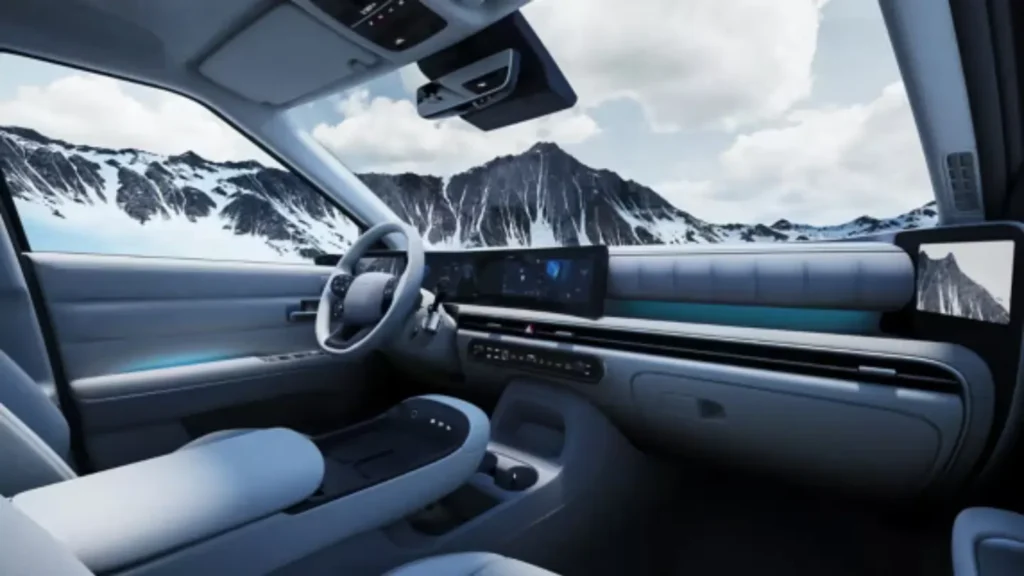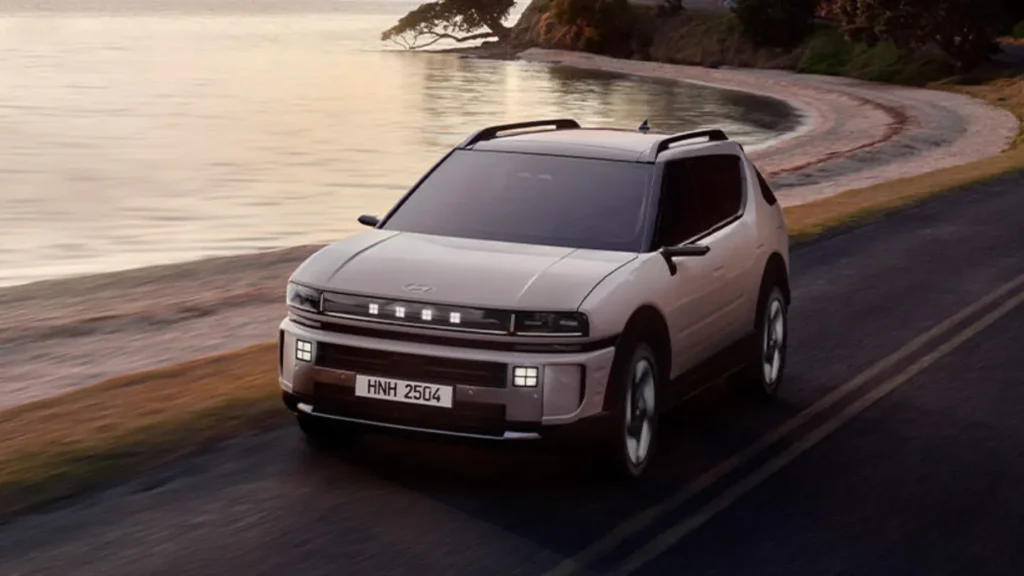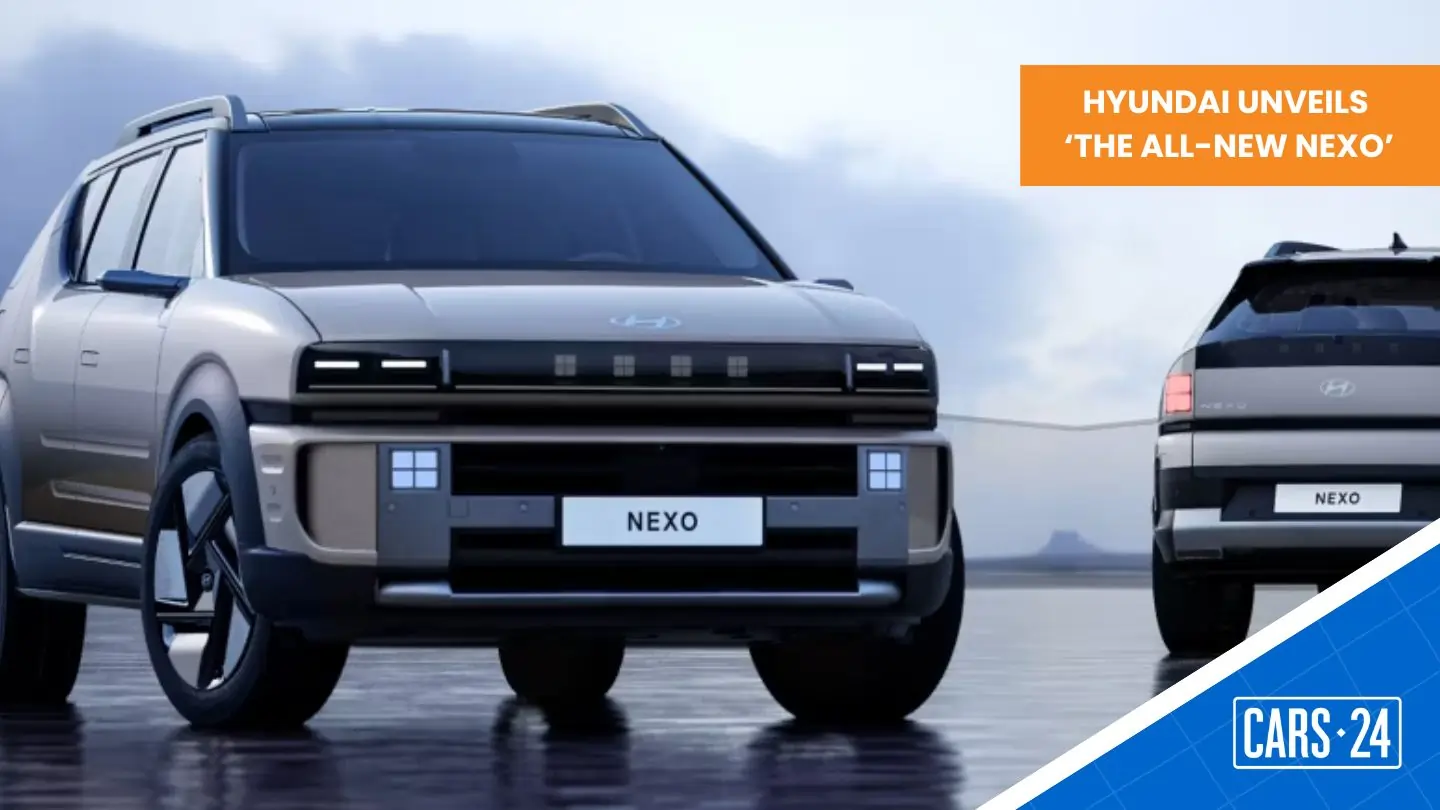In the realm of alternative fuel systems for mobility, hydrogen fuel-cell electric technology remains a niche but some brands are still committed to it. One of the two best known hydrogen FCEVs in the world is the Hyundai Nexo and the Korean carmaker has just unveiled the next-generation of the zero-emission SUV. Yes, it is set to land in Australia in the first half of 2026. However, due to limited hydrogen infrastructure, it is unlikely to be available for private buyers, continuing its restricted availability through lease or special-order arrangements for businesses.
The Hyundai Nexo and Toyota Mirai remain the only hydrogen fuel cell vehicles offered in the country.
Get a Roadworthy Certificate fast and convenient with CARS24, book an appointment for the inspection and the rest is simple.
Powertrain and efficiency enhancements
The new Nexo features advancements in its fuel cell (FC) and power electronics (PE) systems. Hyundai has implemented a redesigned motor system based on third-generation (eK) drive motor specifications, increasing power efficiency and battery capacity.
The total output for the Nexo has gone up from 135kW to 190kW, while the battery capacity has doubled from 40kW to 80kW. These upgrades have improved acceleration, reducing the 0-100 km/h time from 9.2 seconds to 7.8 seconds.
The hydrogen storage system has also been enhanced, with tank capacity increasing from 6.33 kg to 6.69 kg. Hyundai claims the Nexo will achieve a range of more than 700 km (as per the Korean Ministry of Trade, Industry and Energy standard) on a single five-minute refuel.

Design and interior enhancements
The Nexo adopts Hyundai’s “Art of Steel” design language, derived from the INITIUM concept. The exterior features bold lines, a sturdy structure, and aerodynamic wheels. Signature HTWO and 4 Dot lamps serve as distinct design elements, ensuring brand identity and visibility. With its boxy proportions, one might even spot a hint of Pontiac Aztek in its appearance.
The new Nexo has been extended in length, width, and height, offering a more spacious cabin. The vehicle provides a maximum storage capacity of 993 liters, capable of accommodating up to four golf bags. It includes soft-touch materials, a driver-centric curved display comprising two 12.3-inch screens – one for the instrumentation and the other for the touch-based infotainment unit. Like other new era Hyundai EVs, the new-generation Nexo moves the drive-selector from the central console to a stalk behind the steering wheel.
Technology and features
The next-generation Hyundai Nexo gets a lot more tech than the outgoing model for enhanced convenience and comfort of the passengers. It has Hyundai’s latest infotainment system software with wireless Apple CarPlay and Android Auto, over-the-air updates and a digital assistant with voice recognition. The new Nexo also gets a digital key system, dual wireless charging pads, fingerprint authentication system, a 12-inch head-up display, a digital inside rearview mirror utilising a camera monitor system, and some markets will also get digital side mirrors. Rear passengers can also enjoy added comfort with ventilated rear seats and better audio with a 14-speaker Bang & Olufsen sound system.
Safety enhancements
Hyundai has reinforced the Nexo’s body structure with hot stamping and high-strength materials to improve rigidity and passenger protection. The vehicle features a multi-skeleton frame with nine airbags, offering additional safety for occupants and the hydrogen tank.

The Advanced Driver Assistance Systems (ADAS) include Forward Collision-Avoidance Assist (FCA 2) with Evasive Steering Assist, which detects potential collisions and provides emergency steering assistance if needed.
Fuel-cell or battery?
In the race for ‘green mobility’, Battery electric vehicles (BEVs) have already established themselves, while hydrogen fuel cell vehicles (FCEVs) remain a niche alternative and are largely inaccessible to the public. Despite advantages like rapid refueling and extended range, hydrogen technology lags behind due to the increased complexity of storing and transporting hydrogen. Meanwhile, BEVs enter the market with their efficiency, lower costs, and widespread charging infrastructure. Here’s a breakdown of how the two compare:
| Feature | Battery Electric Vehicles (BEVs) | Hydrogen Fuel Cell Vehicles (FCEVs) |
| Technology maturity | Well-established with a growing market share | Limited adoption, mostly experimental |
| Refueling/Charging time | Longer charging time | Quick refueling, similar to ICE vehicles |
| Range | Varies across different models and cars | Typically offers a longer range per refill |
| Infrastructure | Widespread and growing charging stations | Extremely limited hydrogen refueling stations |
What do you think? Do you see hydrogen cars becoming more viable, or will BEVs remain the dominant choice? Let us know in the comments!

Comments
New Comment